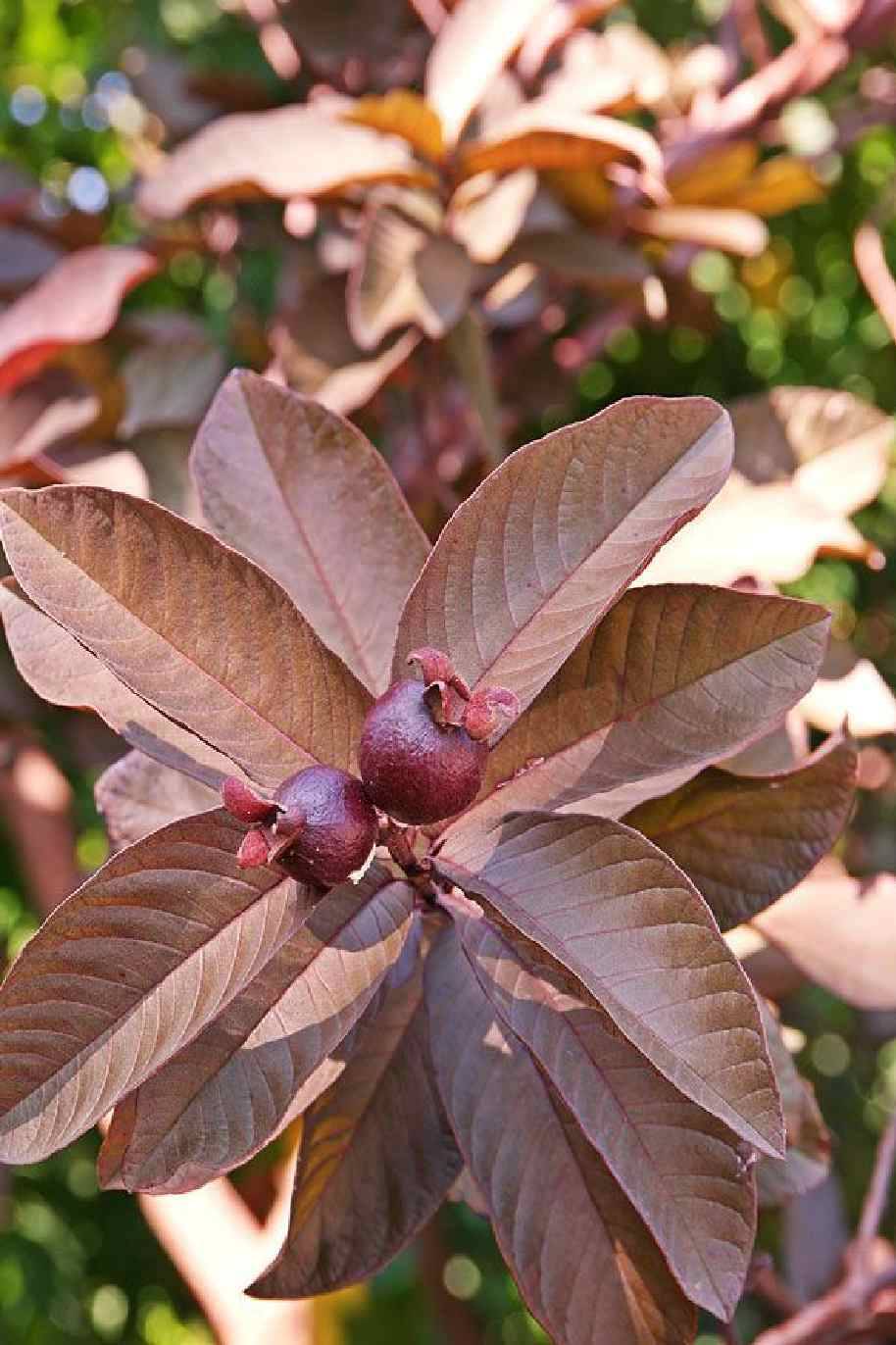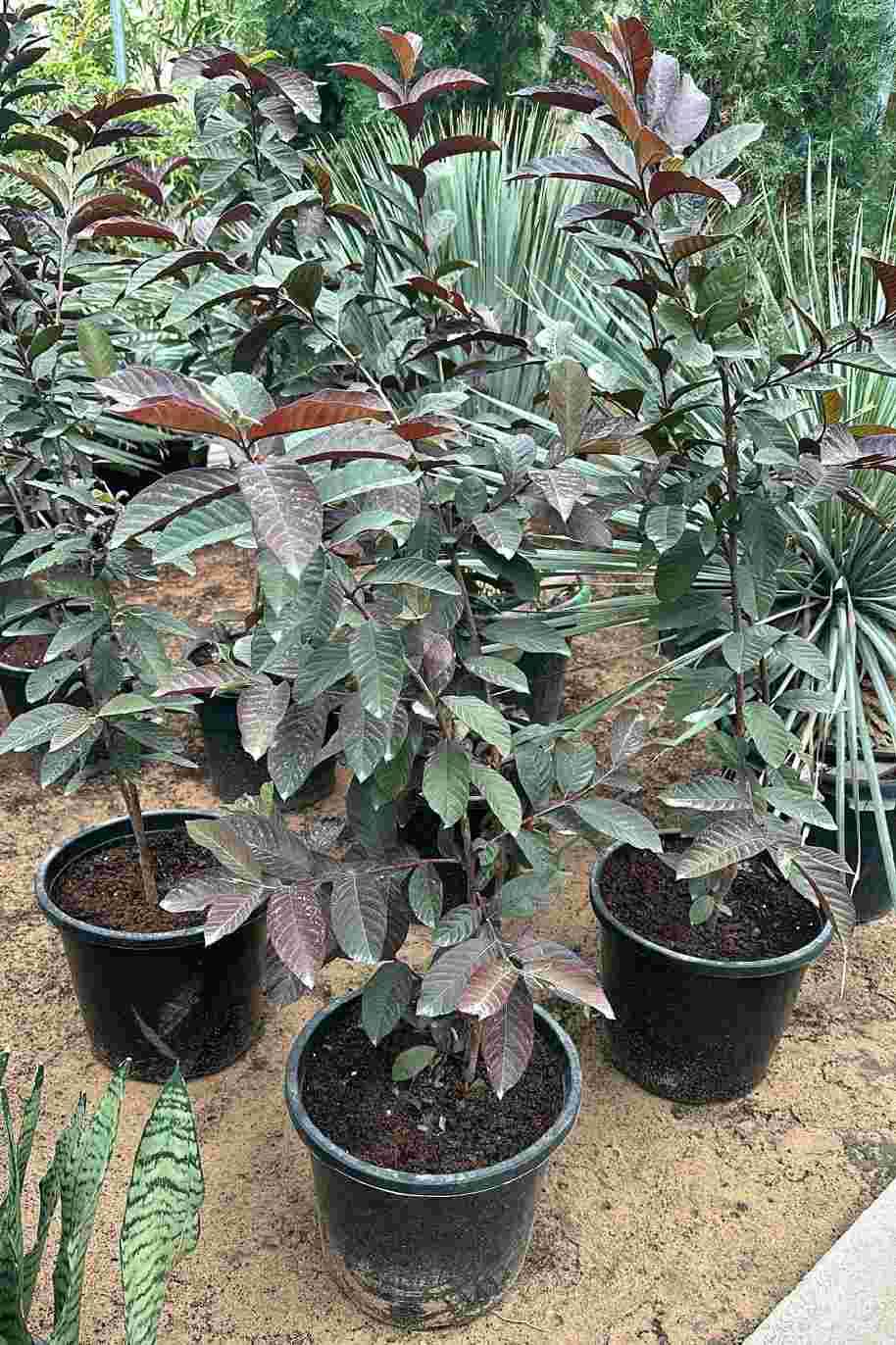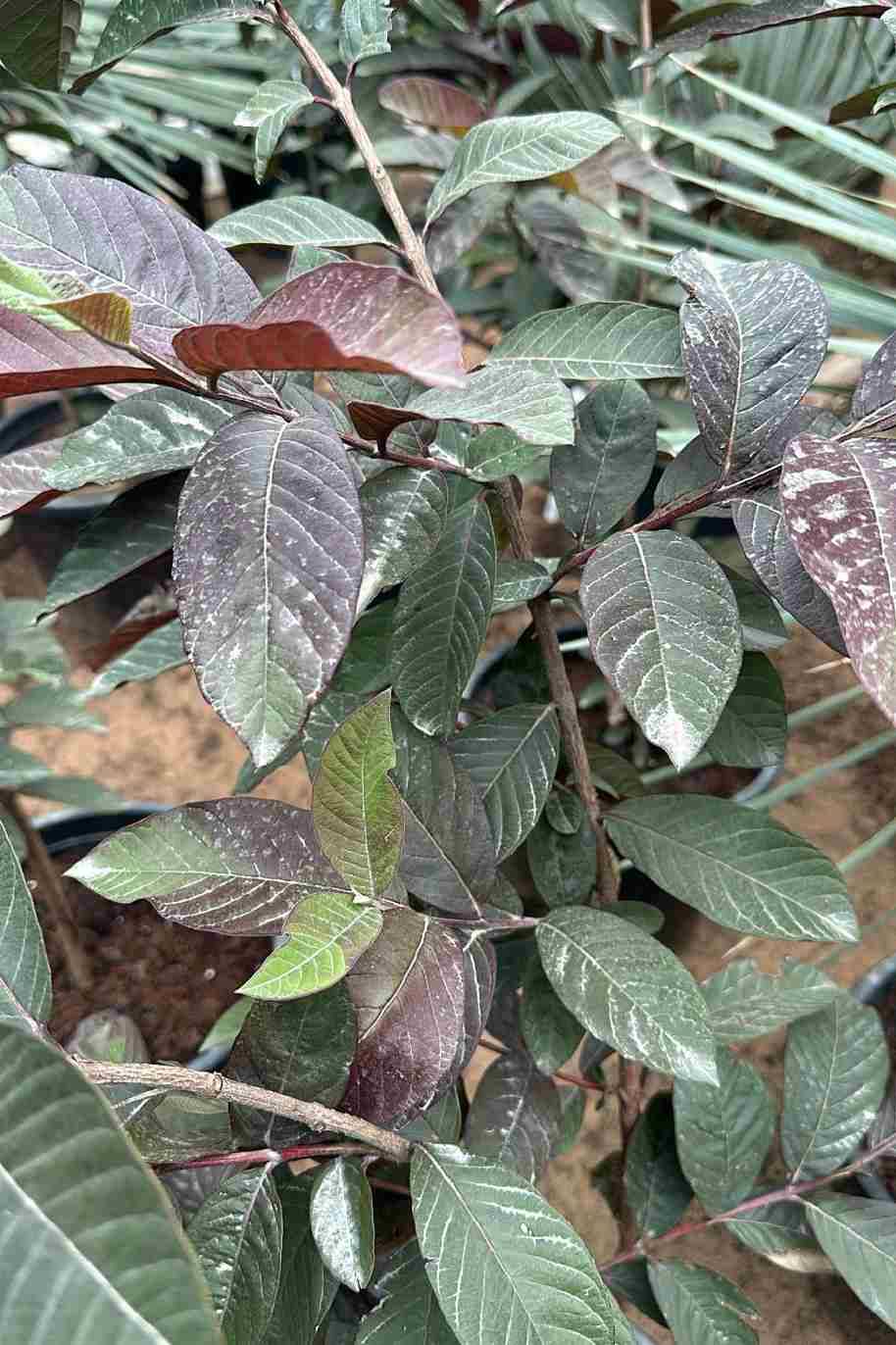Plant Bio
The Red Guava plant, scientifically known as Psidium guajava, is a tropical fruit-bearing shrub or small tree belonging to the Myrtaceae family. Originating from Central America, this species is now widely cultivated in tropical and subtropical regions around the world for its delicious and nutritious fruit. Red Guava is prized for its sweet, aromatic, and juicy red-fleshed fruits, which are commonly eaten fresh, juiced, or used in various culinary applications. Here's a description of the Red Guava plant:
Leaves: The leaves of the Red Guava plant are elliptical to oblong in shape, with a glossy green surface and prominent veins. They are arranged in opposite pairs along the stems and emit a distinctive fragrance when crushed.
Flowers: Red Guava produces small, white flowers with prominent stamens that are borne singly or in clusters in the leaf axils. The flowers are typically fragrant and have five petals, with the stamens giving them a characteristic appearance.
Fruit: The fruit of the Red Guava plant is a berry-like, pear-shaped or round berry with smooth, thin skin that ripens to yellow or red-orange hues. The flesh of the fruit is juicy, aromatic, and varies in color from white to pink or red, depending on the variety. It contains numerous small seeds embedded in the pulp.
Bark: The bark of the Red Guava plant is smooth and brownish-gray when young, becoming rough and fissured with age. The trunk and branches may develop interesting patterns and textures over time.
Size: Red Guava plants can vary in size depending on growing conditions and cultivars. They typically grow as multi-branched shrubs or small trees, reaching heights of 10 to 20 feet (3 to 6 meters) with a similar spread.
Care Guide for Red Guava Plant:
Sunlight:
Plant Red Guava in a location that receives full sun to partial shade. It thrives in bright, direct sunlight and requires at least 6-8 hours of sunlight per day for optimal growth and fruit production.
Temperature:
Red Guava prefers warm, tropical climates and is sensitive to frost. It thrives in temperatures between 68°F to 86°F (20°C to 30°C) but can tolerate brief periods of higher or lower temperatures.
Soil:
Provide well-draining, fertile soil with a slightly acidic to neutral pH (pH 5.5 to 7.0). Red Guava is adaptable to a variety of soil types, including sandy, loamy, or clay soils, as long as they are well-drained.
Watering:
Water Red Guava regularly, especially during periods of active growth and fruiting. Keep the soil evenly moist but not waterlogged. Once established, it is moderately drought-tolerant but benefits from regular watering during dry spells.
Fertilization:
Feed Red Guava with a balanced, slow-release fertilizer formulated for fruit-bearing trees in spring, just before the start of the growing season. Follow the manufacturer's instructions for application rates and frequency.
Pruning:
Prune Red Guava as needed to maintain its shape, remove dead or diseased branches, and promote air circulation and sunlight penetration within the canopy. Pruning can be done in late winter or early spring before new growth begins.
Mulching:
Apply a layer of organic mulch, such as shredded bark or compost, around the base of the plant to conserve moisture, suppress weed growth, and regulate soil temperature. Keep the mulch several inches away from the trunk to prevent rotting.
Pest and Disease Control:
Red Guava is relatively resistant to pests and diseases, but occasional issues with aphids, scale insects, fruit flies, or fungal diseases may occur. Monitor the plant regularly and treat any problems promptly with appropriate insecticides or fungicides.
Propagation:
Propagate Red Guava from seeds, cuttings, or air-layering. Seeds should be collected from ripe fruits and sown fresh, as they have a short viability period. Cuttings should be taken from semi-hardwood stems and treated with rooting hormone before planting.
Harvesting:
Harvest Red Guava fruit when fully ripe, as indicated by its color change from green to yellow or red-orange and a slight softening of the fruit. The fruit should be firm yet yield slightly to pressure. Avoid harvesting unripe fruit, as it may be hard and lacking in flavor.
With its delicious fruit, attractive foliage, and tropical appeal, Red Guava is a popular choice for home gardens, orchards, and edible landscapes in warm climates. With proper care and maintenance, it can provide a bountiful harvest of sweet and nutritious fruit for many years. Adjust care practices based on your specific growing conditions and the needs of the plant.










